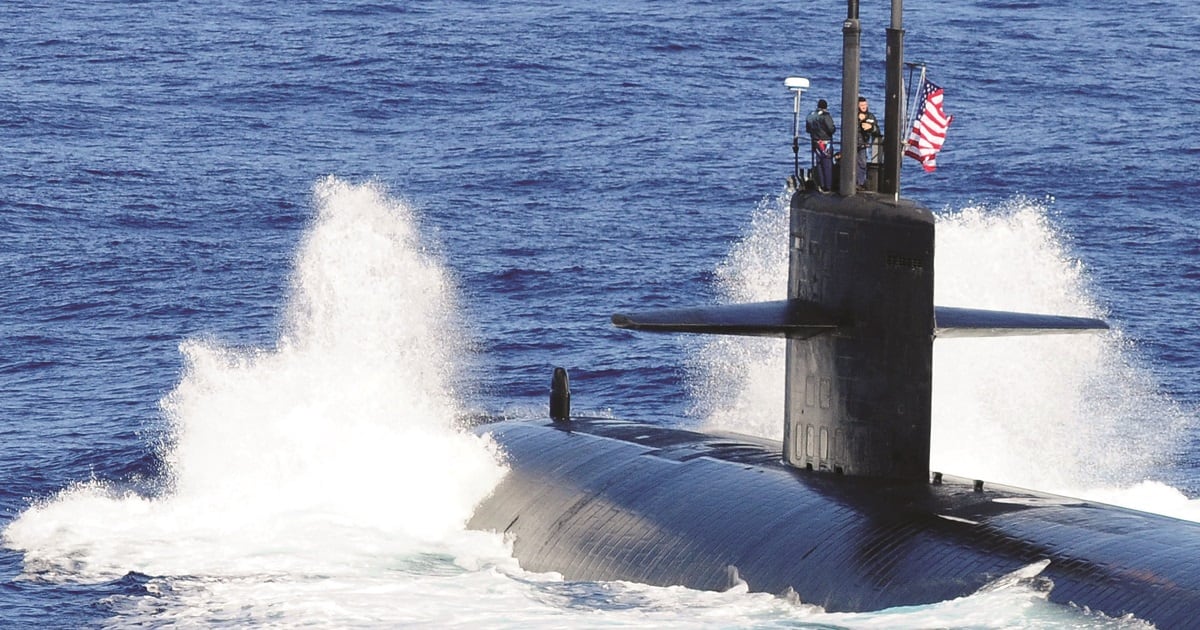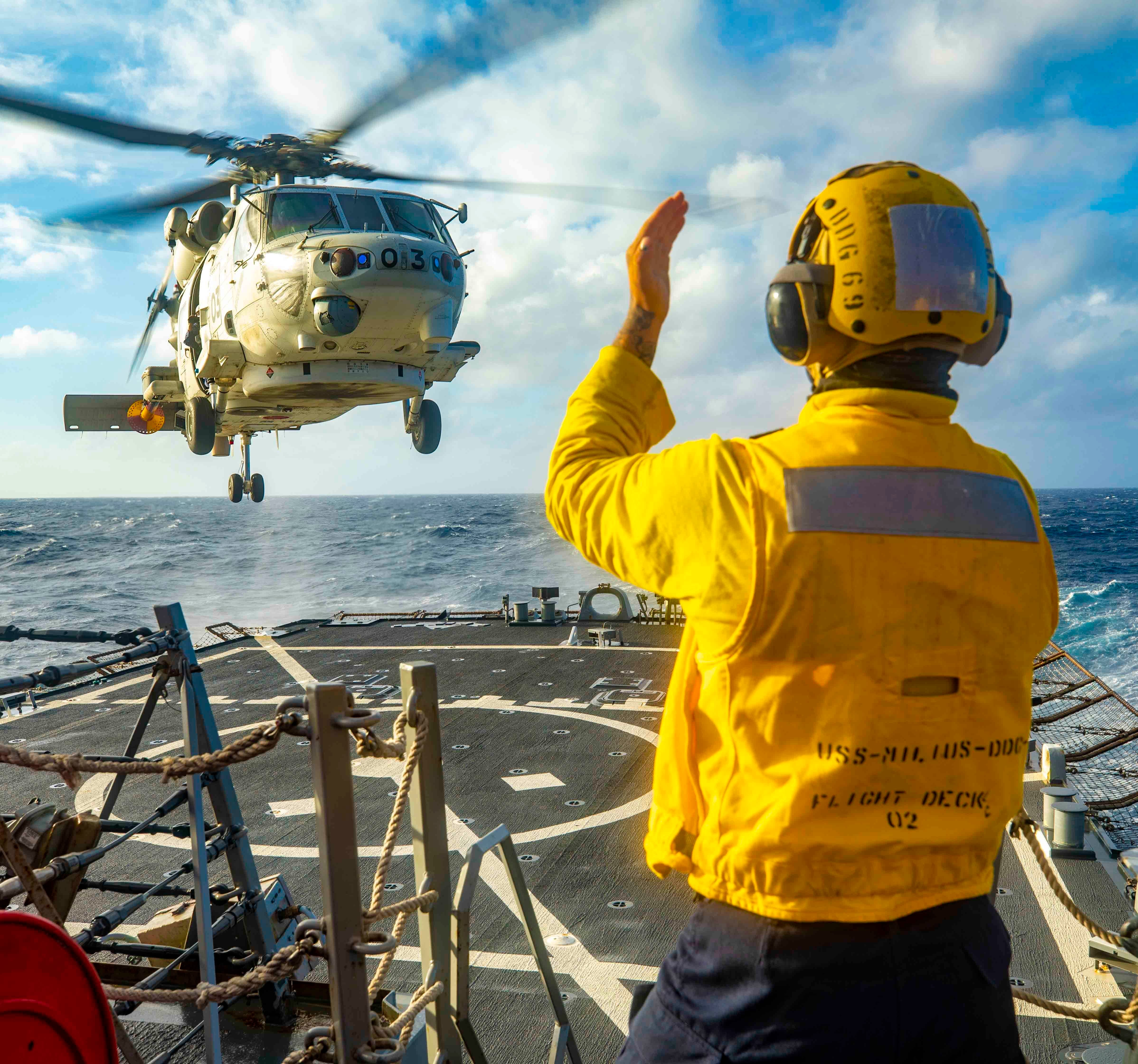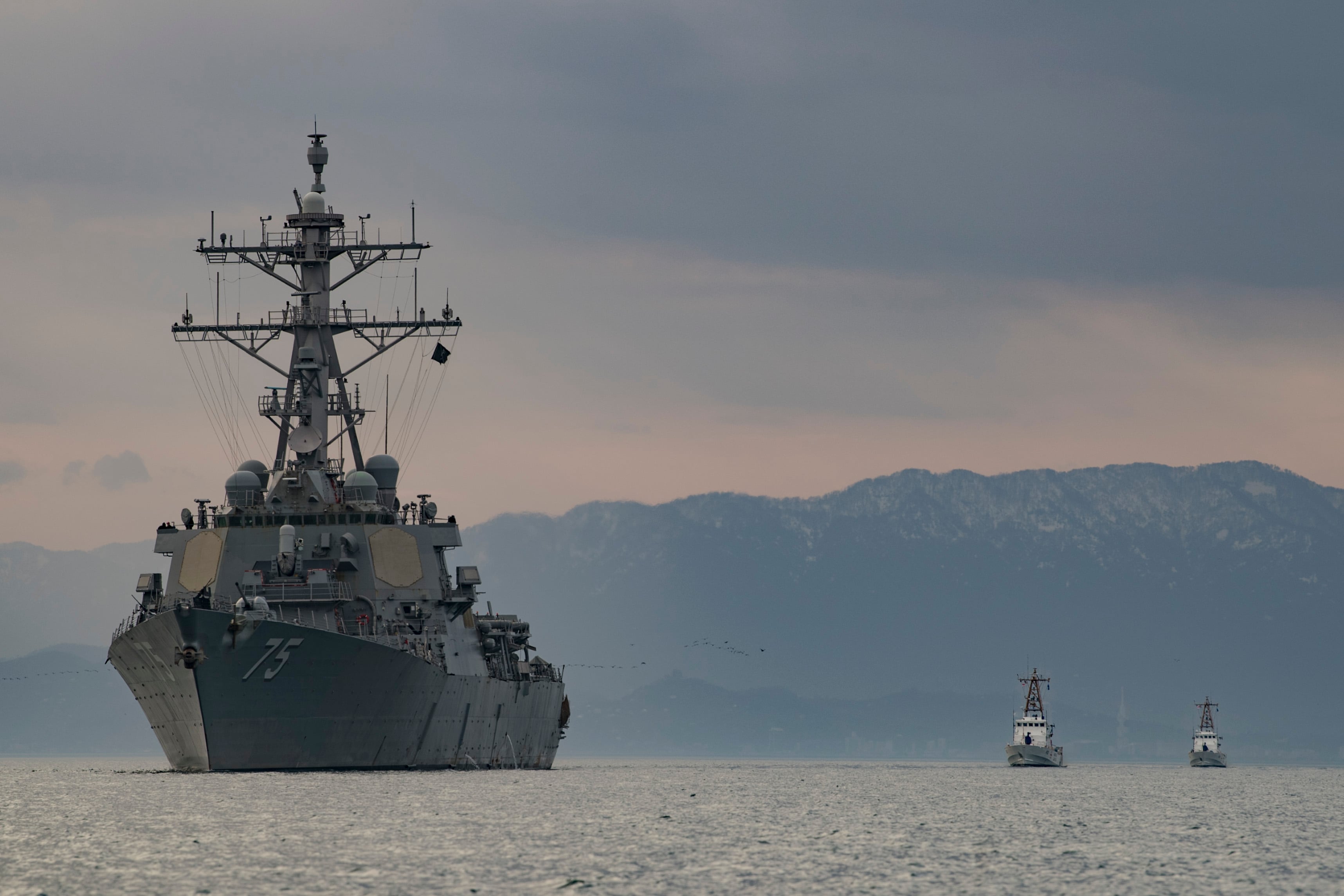The U.S. Navy and the Japan Maritime Self-Defense Force teamed up this week to conduct an anti-submarine warfare exercise in the South China Sea.
The exercise involved the destroyer Milius and a U.S. Navy P-8A Poseidon aircraft, along with Japan’s helicopter carrier Kaga and destroyer Murasame. Additionally, an unidentified submarine and P-1 maritime patrol aircraft from the JMSDF joined in the exercise.
RELATED

Lt. Cmdr. Joe Keiley, a spokesperson for Task Force 71, said in an email to Navy Times that the Nov. 15-16 exercise enhanced the ability of the U.S. and Japanese navies to track submarines together, along with testing each unit’s anti-submarine warfare capabilities.
“This was another opportunity to train and exercise together to improve interoperability and strengthen our capabilities and was not conducted in response to any specific event,” Keiley said. “Over several days, USS Milius and the P-8 were the only U.S. units that participated.”
“The focus of the exercise was to test each unit’s capabilities in tracking submarines and working together to do so,” Keiley said. “Our alliance is strong because of the close engagement that happens through events like this, where we work through shared challenges enabling security and stability and demonstrate our common vision of a free and open Indo-Pacific.”

The exercise was the first time the Japanese submarine had participated in an anti-submarine warfare exercise with the U.S. Navy in the South China Sea, the MSDF said in a news release.
In September, U.S. and Japanese helicopter squadrons worked together to conduct an anti-submarine warfare exercise in the Philippine Sea. An MH-60R Seahawk from Helicopter Maritime Strike Squadron 51 and an SH-60K from the JMSDF’s Air Development Squadron 51 tested anti-submarine warfare tactics and completed safety of flight formation maneuvers to enhance interoperability.
RELATED

“The exercise that we conducted with JMSDF demonstrated that we are fully capable of integration between our two nations,” Lt. Kris Appel, an HSM-51 pilot, said in a Navy news release. “I believe this sets us up for an increase in lethality and prepares us to face any future challenges our two countries may face together.”
Rear Adm. Jeffrey Jablon, commander of Submarine Force, U.S. Pacific Fleet, stressed the importance of allies like Japan in the undersea domain as he focuses on China, which has four ballistic missile submarines and a force of 50 diesel-electric attack submarines, The Nuclear Threat Initiative reported in February.
“We are extremely, extremely busy in the Pacific,” Jablon said at the Naval Submarine League annual symposium Nov. 18. “It’s important that we face those challenges with a sense of urgency, and that’s what I’m conveying to the Pacific submarine force — is to have a sense of urgency.”





